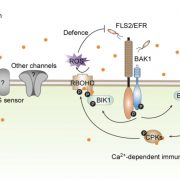
A calmodulin-gated calcium channel links pathogen patterns to plant immunity ($) (Nature)
Plant Science Research WeeklyCalcium ions mediate calcium-based defense responses in pattern triggered immunity (PTI) upon detection of pathogen patterns by plant surface receptors. A new study by Tian et al. has elucidated the molecular events that activate the calcium response. The authors show that adequeate calcium nutrient…

Root development is maintained by specific bacteria-bacteria interactions (bioRxiv)
Plant Science Research WeeklyUnderstanding plant-microbe and microbe-microbe interactions is challening. Both kinds of interactions have significant impacts on plant health and nutritional uptake. Finkel et al. address how microbe-microbe interactions shape plant phenotypes by using the synthetic microbial community (SynCom) consisting…
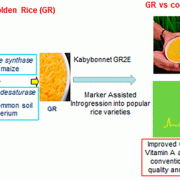
Compositional analysis of genetically engineered GR2E “Golden Rice” (J. Agric. Food Chem.)
Plant Science Research WeeklyIn Southeast Asian countries, rice accounts for two-thirds of the caloric intake for many people. This narrow dietary base is often correlated with vitamin A deficiency, which can cause blindness, anemia and weakened immunity. In an effort to enhance vitamin A consumption, rice has been engineered to…
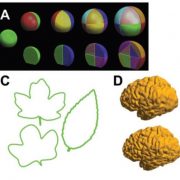
Review: Formal description of plant morphogenesis (J Exp Bot) ($)
Plant Science Research WeeklyIn recent years, a number of tools have been developed to describe and model plant morphogenesis, and these approaches have greatly informed our understanding of the molecular processes that underpin the control of growth. This excellent review by Pałubicki et al. is “an attempt to bring together…

Update. GMO-free RNAi: exogenous application of RNA molecules in plants (Plant Physiol)
Plant Science Research WeeklyCriticism of transgenic plants and GMOs motivates research into effective GMO-free RNA delivery methods. In this review, Dalakouras et al. discuss different strategies for exogenous application of RNA molecules (dsRNAs, siRNAs) into plants to trigger RNA interference (RNAi) against various targets, such…
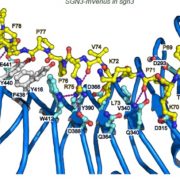
Recognition of sequence-divergent CIF peptides by the plant receptor kinases GSO1/SGN3 and GSO2 (bioRxiv)
Plant Science Research WeeklySCHENGEN 3 [SGN3, also known as GASSHO1 (GSO1)] is a leucine-rich repeat receptor kinase (LRR-RK) previously shown to interact with CIF peptides (CASPARIAN STRIP INTEGRITY FACTORS) to regulate the development of the Casparian strip boundary in roots. Here, Okuda et al. characterize the CIF/LRR-RK interaction.…
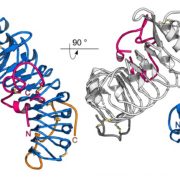
Structural basis for recognition of RALF peptides by LRX proteins during pollen tube growth (bioRxiv)
Plant Science Research WeeklyRALFs (Rapid Alkalinization Factors, based on historical observations that they induce alkalization of the extracellular space) are signaling peptides with diverse roles. RALF4 is required for pollen tube growth and guidance through its interactions with CrRLK1Ls and leucine-rich extension (LRX) proteins.…
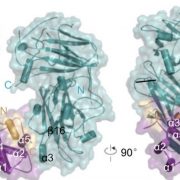
Mechanisms of RALF peptide perception by a heterotypic receptor complex (Nature) ($)
Plant Science Research WeeklyRALFs (Rapid Alkalinization Factors, based on historical observations that they induce alkalization of the extracellular space) are signaling peptides with diverse roles. RALFs have previously been shown to bind to the extracellular domain of (among others) FERONIA (FER), a member of the Catharanthus…
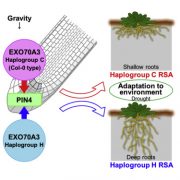
Root system depth is shaped by EXOCYST70A3 via modulation of auxin transport (Cell)
Plant Science Research Weekly
The angle at which roots grow into the soil is modulated by the interaction between genetics and environment, and involves the gravity perception and response pathways including auxin transporters. Ogura et al. did a GWAS analysis of the gravitropic response of different Arabidopsis accessions in…

